5 Things You’re Doing Wrong with Indian Chicken Vindaloo (And How to Fix Them)
Ever made a Chicken Vindaloo only to realize it tastes more like your aunt’s spaghetti sauce than Goan street food? Don’t worry, you’re not alone. In this blog post, we’ll uncover the most common mistakes people make when recreating this iconic Goan dish at home — and how to fix them using science, tradition, and a pinch of spice wisdom.
Table of Contents
- Introduction
- Mistake #1: Skipping the Vinegar Soak
- Mistake #2: Using the Wrong Cut of Meat
- Mistake #3: Overcooking Your Marination
- Mistake #4: Forgetting the Heat Layering
- Mistake #5: Neglecting Regional Twists
- Pro Tips for a Show-Stopping Vindaloo
- Conclusion
What is Indian Chicken Vindaloo?
The origin story of Vindaloo is as spicy as the dish itself. Originally from Portugal, the dish was called *Carne de Vinha d’Alhos*, which translates to “meat in wine vinegar marinade.” When Portuguese colonizers brought it to Goa, Indians transformed it by swapping pork for chicken, adding local spices, and turning it into the fiery curry we know today.
Now a staple on British-Indian menus, the authentic Goan Chicken Vindaloo relies on bold flavors — vinegary tang, chili heat, garlic depth, and a hint of sweetness. But too often, amateur cooks miss the mark. Let’s break down where things go wrong.
Mistake #1: Skipping the Vinegar Soak
Vinegar isn’t just there to be sour — it plays a crucial role in tenderizing the meat and allowing the spices to penetrate deeply.
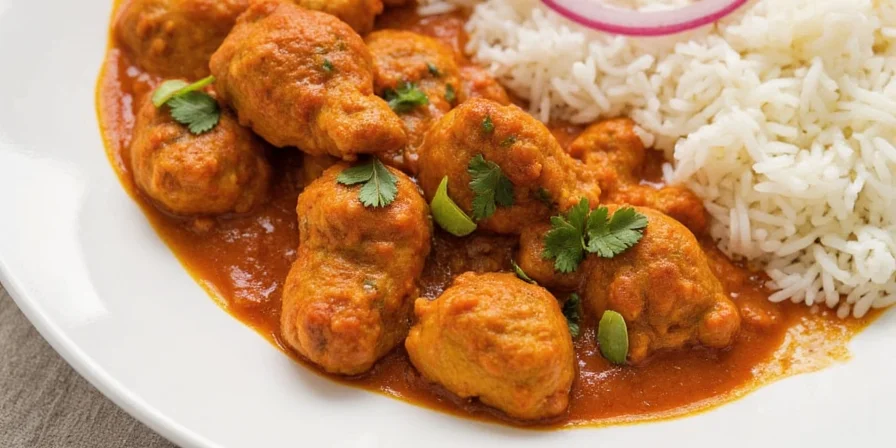
Common error: many recipes call for a quick 30-minute marinate. But if you really want that deep flavor, aim for 8–12 hours. Vinegar works slowly, and given time, it breaks down proteins, making the chicken incredibly tender and juicy.
Fix:
- Use distilled white vinegar or apple cider vinegar (less harsh, more complex flavor).
- Let it sit overnight in the fridge.
- Don’t drain the vinegar before cooking — it’s part of the sauce base!
Mistake #2: Using the Wrong Cut of Meat
In India, especially Goa, traditional Vindaloo uses pork, which holds up well to long marination and slow cooking. But for chicken lovers, the cut choice matters a lot.
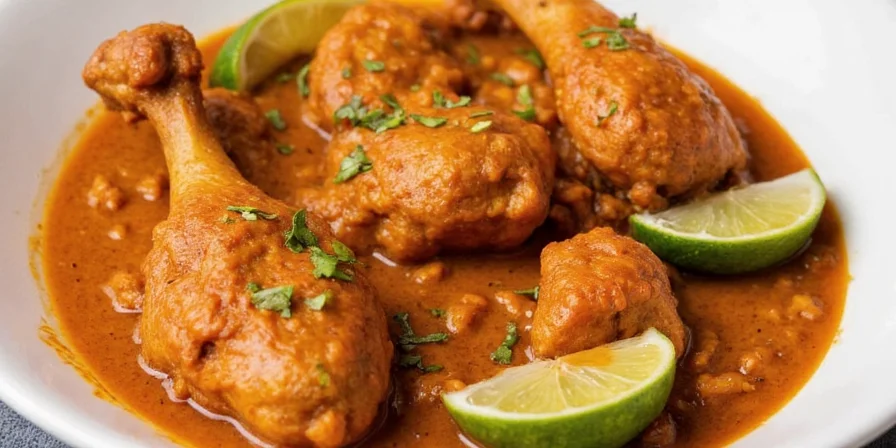
| Cut of Chicken | Pros | Cons |
|---|---|---|
| Thighs (bone-in or boneless) | Much more flavorful, stays moist during simmering | Longer cooking time |
| Chicken breast | Lean, quick to cook | Dries out easily, lacks depth |
| Drumsticks | Great for rich flavor | Not ideal for all settings |
Bone-in thighs are your best bet. They keep their moisture, absorb more marinade, and deliver a richer final dish.
Mistake #3: Overcooking Your Marination
While longer marination can be better, some spices react poorly to extended exposure. Garlic, for instance, turns bitter after too long.

Avoid leaving your chicken marinating with raw garlic for more than 12 hours. If you're prepping ahead, store the dry spice mix separately and add the garlic right before cooking.
Fix:
- Make two parts of your masala: one with dry spices, one with fresh ingredients (like garlic, ginger, chilies).
- Add the fresh portion just before cooking.
- This keeps flavors bright and vibrant.
Mistake #4: Forgetting the Heat Layering
True spice lovers know that great heat doesn't come from a single source. It's layered — from Kashmiri chili powder (for color and mild heat), to green chilies (fresh fire), and even a dash of cayenne at the end for that lingering burn.
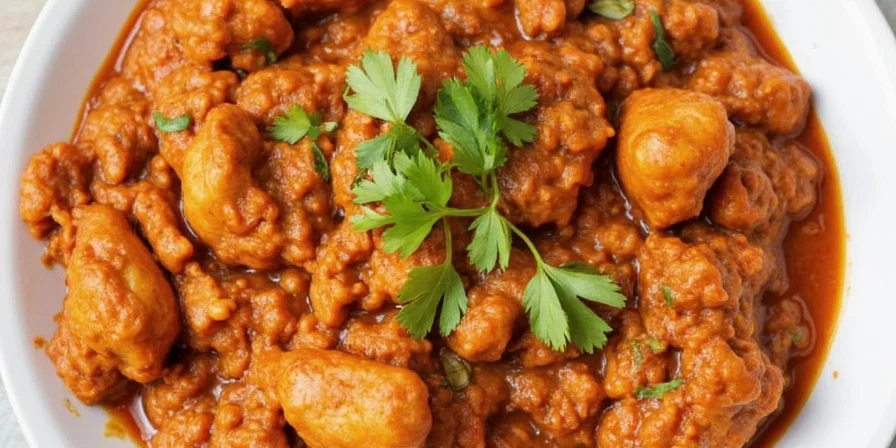
Many home recipes rely solely on chili powder, leading to a flat, one-note heat profile. To replicate restaurant-level flavor complexity, try this combo:
- Kashmiri red chili powder – Adds vibrant red color without overwhelming heat
- Fresh green chilies – Sliced and added early in the cooking process
- Cayenne pepper – A pinch at the end for extra punch
Mistake #5: Neglecting Regional Twists
Vindaloo has evolved across regions. While Goan style is tangy and vinegary, Mangalorean versions add grated coconut for creaminess, and some northern adaptations include tomatoes.
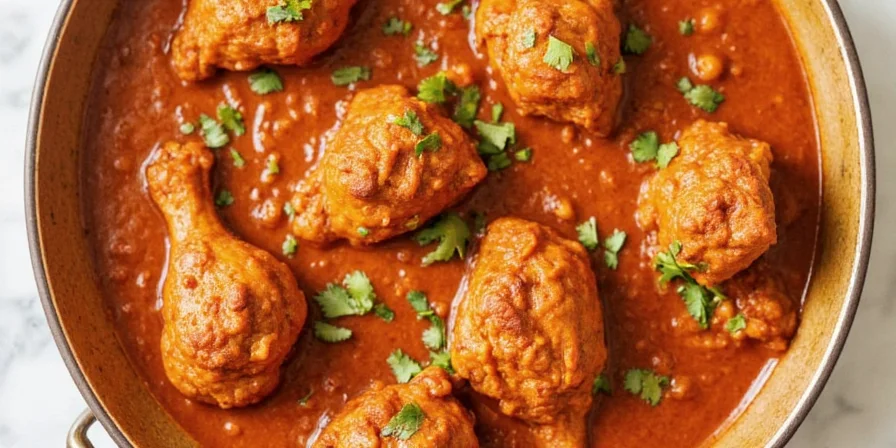
Experimenting with regional twists can elevate your dish. Here’s a breakdown:
| Region | Signature Ingredient | Flavor Impact |
|---|---|---|
| Goa | Vinegar, garlic, cinnamon | Tangy, aromatic, slightly sweet |
| Mangalore | Coconut milk, tamarind | Creamier, balanced sourness |
| Northern India | Tomato, garam masala | Smoother, sweeter base |
Pro Tips for a Show-Stopping Vindaloo
You’ve avoided the major mistakes — now let’s take it up a notch with some insider tips:
- Toast your spices: Dry roast whole spices like cloves, cinnamon, and black peppercorns before grinding for deeper aroma.
- Don’t rush the gravy: Simmer low and slow. This lets flavors meld beautifully.
- Rest it overnight: Like many stews and curries, Vindaloo tastes even better the next day.
- Garnish with love: Fresh curry leaves, sliced green chilies, or a drizzle of lemon juice can make all the difference.
Conclusion
Mastering Indian Chicken Vindaloo is less about following a strict recipe and more about understanding how each ingredient plays its part. From the importance of vinegar to the nuances of spice layering, these small adjustments can transform your dish from bland to brilliant.
Remember, the goal isn’t perfection — it’s capturing the soul of the dish. And that comes from experience, experimentation, and maybe a little bit of vinegar magic.
So next time you’re reaching for that bottle of vinegar, think of it as your secret weapon. With these five fixes and a few pro tips, your Vindaloo will have everyone asking, “Did you fly to Goa last weekend?”

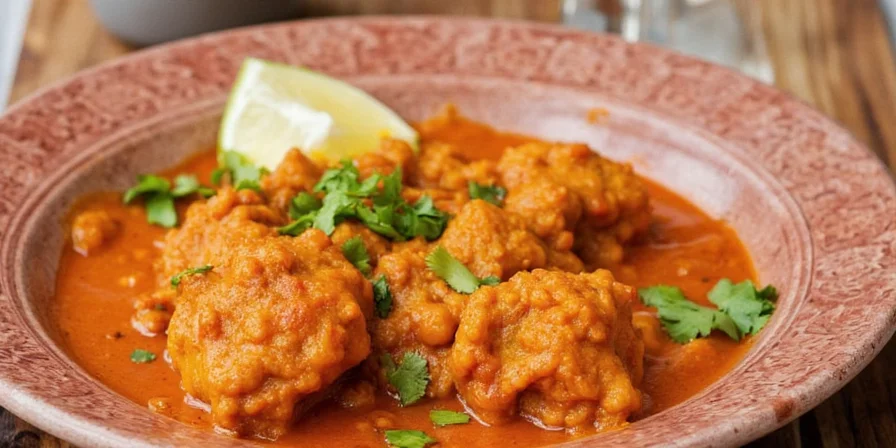









 浙公网安备
33010002000092号
浙公网安备
33010002000092号 浙B2-20120091-4
浙B2-20120091-4